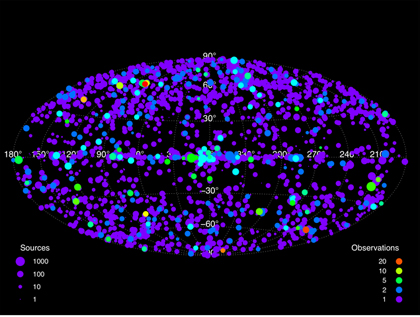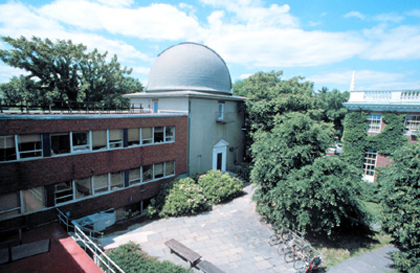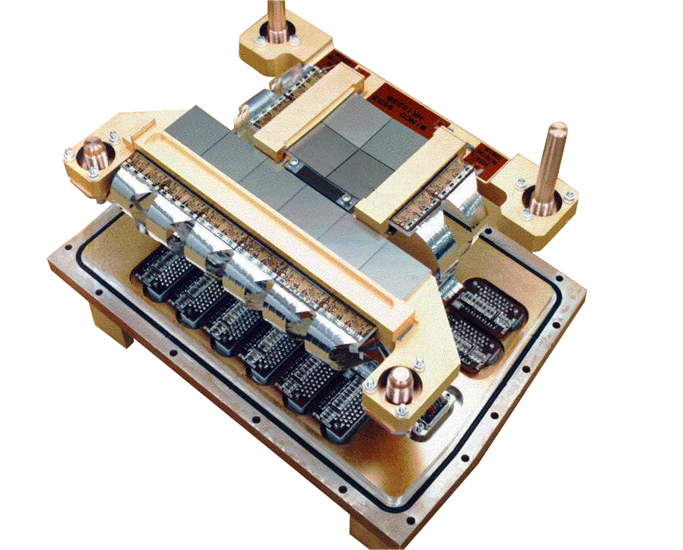Career Development
Women in the High-Energy Universe: Melissa Weiss
Melissa Weiss has been a graphic designer for the Chandra project for over a decade. Her work can be seen throughout Chandra's website as well as its print and multimedia products for students, teachers and the public.
I have to be honest, my career in astronomy happened organically. Part of me wants to say that, as a child, I always looked up at the stars and dreamed of what lay with them. But the reality is that my interests weren't really up with the stars, but down on canvas with paints, pens, and any other tool I could be creative with. Art has always been my passion.
Women in the High-Energy Universe: Janet DePonte Evans
Janet DePonte Evans is the Software Development Manager for the Chandra X-ray Center Data System (CXCDS) group, which provides end-to-end scientific software for Chandra's mission operations. This includes software to manage the scientific proposals, mission planning software prior to an observation, and then the software to reduce and analyze the scientific data returned from the telescope. Janet's group also developed and maintains the Chandra data archive and interfaces that allow scientists to retrieve Chandra data for further study.

Women in the High-Energy Universe: Belinda Wilkes
Belinda Wilkes is a senior astrophysicist at the Smithsonian Astrophysical Observatory who specializes in the study of supermassive black holes in the centers of galaxies. She is also the Director for the Chandra X-ray Center.

How did I get interested in astronomy and science? I was always good at math, since primary school, and this broadened into being good at physics once in middle and high school. I became interested in astronomy during my “A level” physics course (last two years of high school in the UK). I am not sure what triggered it, perhaps reading New Scientist articles or studying Kepler's laws as part of the course. I also read Hoyle's "The Nature of the Universe" about continuous creation, and was fascinated. I then decided to include astronomy in my undergraduate courses and made university applications accordingly. Once there, I continued to love the application of physics to astronomy and continued on to a PhD in astronomy.
Women in the High-Energy Universe: Nancy Adams-Wolk
Nancy Adams-Wolk is an instrument operations scientist at the Chandra X-ray Center. Her job, among others, is to ensure that one of the telescope’s main instruments – the Advanced CCD Imaging Spectrometer (ACIS) -- is healthy and performing up to its full capacity.
Women in the High-Energy Universe: Lisa Paton
Lisa Paton is the Information Technology (IT) Manager for the High-Energy Astrophysics Division of the Harvard-Smithsonian Center for Astrophysics (CfA). This means she oversees the computer networks and systems that allow scientists and everyone who work on the Chandra X-ray Observatory and other projects to have the technical infrastructure and support that they need to do their jobs.
(Please read part 1 for an introduction to this series)
Women in the High-Energy Universe: Nancy Brickhouse
This marks the start of a new feature in the Chandra blog that we are calling "Women in the High-Energy Universe." The goal is to highlight and promote the many important ways that women contribute to the pursuit of understanding the Universe through high-energy astrophysics. We've asked various women to tell us -- in their own words -- about their experiences and perspectives of their careers. We invite you to submit your own additional questions to these women, and we will attempt to get them answered. In the meantime, let's meet Dr. Nancy Brickhouse, the first one featured in our new section.
Meet an Astronomer: Leisa Townsley
Leisa Townsley has long been a favorite of the Chandra team. Not only does she do really interesting science, she creates some truly spectacular images that we get to share with the public. Leisa is a Senior Scientist at Penn State University. Keep your eyes open for some more gorgeous Chandra images from Leisa and her colleagues, as well as new science results, in the not-so-distant future.
Meet an Astronomer: Carles Badenes
We've spent a lot of time lately talking about the past 10 years. This has been for an excellent reason, of course: the observatory and the scientists that use it have just done so many great things.
But we don't want to spend too much energy looking back, because there are so many exciting things are still very much in front of us. We recently sat down with some of the best and brightest scientists who are using Chandra and will take the science into its next decade of discovery. We'll share some of those conversations with you here. We hope you sense, like we do, that the best may yet to come.
Meet an Astronomer: Eli Bressert
In this latest installment of our series, we sit down with Eli Bressert. Eli is responsible for making the Chandra images for the public that appear in press releases, on the website, in posters, etc. While we won't get into the technical details of how that gets done in this video blog, we did want to point out that this an important -- if lesser known -- job in the world of space science.
Meet An Astronomer: Randall Smith
Dr. Randall Smith joins us this week for our "Meet an Astronomer" segment. Randall has worn several astronomical hats over the years, but right now he's putting most of his effort into working on the International X-ray Observatory. For those of you who haven't heard of it, IXO as it's known, is the planned next generation of X-ray telescope following along the lineage of Chandra, XMM-Newton and others. To make this happen, NASA, the European Space Agency (ESA), and JAXA, Japan's space agency, have joined forces to work on this proposed mission.

